Tajik Food Dishes: Basic Overview
Common Ingredients
Common Cooking Methods
Courses
Meals
Key Taste
Eating Etiquette
Meal Presentation
Culinary Festivals
Influence and Fusion
Popular Types of Tajik Dishes
-
Stews
Tajik stews are mostly rich and fattening, laden with juicy meat and tender vegetables.
These dishes are ideal items for the main course.
Tajik stews aren’t heavy on spices yet are still full of flavors.
Certain dishes feature seasonal vegetables and are more popular in summer and fall.
-
Soups
Most soups in Tajikistan are made with meat and vegetables.
They are usually as rich and hearty as stews, with the higher liquid content being the biggest difference between the two categories.
-
Bread and Doughs
Bread is the default side dish for many savory dishes in Tajikistan, from grilled meat to rice dishes.
Bread is extremely important to Tajik culture and is associated with many native customs and rituals.
Many Tajik dishes use bread as the main ingredient, such as bread salads or soups.
Baked and deep-fried pastries are familiar snacks and street foods.
With salads
-
Snacks
Tajik snacks include many categories, such as fried dishes, dumplings, and pies.
These dishes are usually rich and savory, featuring meat or dairy products.
Many snacks are served on special occasions such as Navruz, weddings, and birthdays.
Certain Tajik snacks serve as street food dishes and appetizers.
Tajik dishes have a long history in Tajikistan, a country in Central Asia. Those dishes are strongly shaped by neighboring cuisines, with Uzbek specialties and Russian specialties major influences.
Such culinary influences were especially powerful when Tajikistan was part of the Soviet Union. Many dishes from former Soviet republics are well-known in the country and vice versa.
Due to historical ties, Persian (Iranian) and Afghan cuisines also contribute significantly to Tajik cuisine. Many local dishes stemmed from traditional dishes in Iranian cuisine.
The diversity of time-honored dishes in Tajikistan depends on many factors, such as season, cultural norms, and religion.
Summer is a great time to enjoy Tajik cuisine since fresh fruits and vegetables are at their most abundant. Communal eating is a typical feature, while Islamic dietary laws cause the exclusion of certain dishes in Muslim-majority Tajikistan.
Continue reading, and I will show you the main features of traditional Tajik food, including its global prevalence and healthy aspects. Next, you will explore the best 18 dishes in Tajikistan.
For each Tajik dish, I will provide information about its origin, main ingredients, preparation technique, type of food, notable variations, flavors, appearances, and other useful facts, like its role in the country’s cuisine.
Finally, I will give you an overview of Tajik cuisine and drink pairing options in the country.
18 Most Popular Tajik Dishes with Filters
Tajik cuisine offers 18 exciting dishes that showcase the beauty of local gastronomy. You will learn about them more easily with my advanced filters, including options like alphabetical sorting, main ingredients, taste, cooking methods, dish types, courses, and global popularity.
Also, check out additional filters based on specific culinary styles, such as traditional, national, and street food options.
Plov
- National
- Traditional
Plov, also known as osh or oshi palav, is a popular mixed rice dish in Tajikistan made with meat, spices, and vegetables. It is the local version of pilaf (or pilau), which dates back to ancient Persia and is popular in many regions worldwide.
Tajiks usually prepare plov by slowly cooking rice with meat, vegetables, and spices in a rich broth. There are hundreds of plov recipes in this Central Asian country.
Popular ingredients for plov include devzira rice (a long-grain rice variety native to Central Asia), meat (like beef or lamb), onions, carrots, cumin, and local spices. Fruits and vegetables like raisins, pumpkins, or apricots sometimes join the mix.
Traditionally, Tajiks prepare the mixed rice dish on a kazan, a type of wok-like cauldron in the region, though a heavy-bottom Dutch oven is a decent substitute.
The rice dish is typically served on a large communal plate and eaten with bare hands. In 2016, UNESCO acknowledged oshi palav as a part of Tajikistan’s intangible cultural heritage, recognizing it as the “king of meals” in the country.
Qurutob
- National
- Traditional
Qurutob is a famous Tajik bread salad. Locals prepare it by soaking pieces of fatir (local flatbread) in a mixture of water and qurut (dried yogurt), then adding various vegetables and herbs to the plate.
Common vegetables for qurutob include cucumber, tomatoes, and onions, while chili peppers, sour cream, and meat are occasionally used as toppings. The uniquely salty flavor of the qurut sauce provides the bread salad with a refreshing flavor.
Qurutob is a typical Tajik communal dish that locals serve on a large plate and eat with their fingers.
Non
- National
- Street Food
- Traditional
Non, also known as tandyr nan, is a traditional flatbread in Tajikistan. It is so important that a Tajik household believes they have run out of food when non is unavailable.
This iconic flatbread is made with flour, yeast, plain yogurt, eggs, and shallots or sesame seeds as optional flavorings. Non is usually round and comes in many sizes. There are many similarities between non and the South Asian flatbread naan.
A typical Tajik breakfast revolves around non, with butter, sour cream, kaymak (high-fat clotted cream), kolbasa (sausage-like meat product), or tea as accompaniments.
Tajiks cook their non by “sticking” it into the sides of a tandyr (a traditional clay oven similar to a tandoor) without using any tray.
Laghmon
- Traditional
Laghmon, or lagman, is a typical Tajik noodle dish. Locals make it by stir-frying chopped beef or lamb before adding potatoes, tomatoes, carrots, and cabbage. When the mixture is tender enough, it is ladled over hand-pulled wheat noodles.
Some laghmon versions include a rich meat broth and chakka (strained yogurt) for the extra flavor.
Laghmon originated from Uyghur cuisine in Xinjiang (China). The noodle dish is also well-known in many Central Asian countries, including Uzbekistan, Kazakhstan, Kyrgyzstan, and parts of Russia.
Shurbo
- Traditional
Shurbo, literally “soup,” is a famous Tajik stew or soup of meat and vegetables, such as tomatoes, potatoes, carrots, and onions. Herbs and spices are added when the stew is ready. Shurbo is often served hot with non.
Depending on the choice of meat, there are many shurbo versions, like kaurmo shurbo (with beef), serka shurbo (with lamb), or murgi shurbo (with chicken).
Outside of Tajikistan, the meat and vegetable stew is also well-known throughout Central Asia.
Manti
- Traditional
Manti is a classic Tajik dumpling dish that is served in or without broth. The most common fillings for manti are spiced minced meat (like lamb or beef), lamb fat, and onions. Vegetables like cabbage, pumpkins, or potatoes are sometimes added.
Tajiks steam the juicy dumplings in a traditional multi-tier steamer with the same design as the one used in China, the birthplace of dumplings. Sour cream is the preferred condiment to go with manti, which is also a popular dish in Central Asia, West Asia, and the Balkans.
Sambusa
- Street Food
- Traditional
Sambusa is a meat pie or pastry with firm, flaky dough in Tajikistan. Besides this country, it is also available in other Central Asian countries under the name of samsa. Sambusa baraki is a variant unique to Tajikistan.
Sambusas are always baked (preferably in a tandyr) and have a triangular shape. The most popular stuffing ingredients for the savory pastry are ground beef or lamb mixed with lamb fat, onions, cumin, and other spices.
Sambusas are among the must-try Tajik street food dishes, snacks, and, sometimes, appetizers. The savory pastry is also available in grocery stores.
When samsas were introduced to South Asia in the 13th or 14th centuries, they inspired the world-famous pastry samosas.
Damlama
- Traditional
Damlama is a popular stew in Tajikistan. It is made with lamb or beef and various summer vegetables, like potatoes, onions, carrots, cabbage, eggplants, bell peppers, and so on.
The preparation of the vegetable stew involves arranging chunks of meat at the bottom of a kazan and then layering the vegetables on top. Tubers and root vegetables are put below leafy ones to ensure even cooking. The ingredients are then simmered for hours.
As damlama uses a minimal amount of water, the meat and vegetables are cooked in their own juice until highly flavorful.
Thanks to the diversity of vegetables, damlama is full of summer colors and pairs well with bread or rice, explaining why it is ubiquitous all over Central Asia.
Piti
- Traditional
Piti is a traditional Tajik soup made from mutton, lamb fat, and vegetables like potatoes, chickpeas, onions, and tomatoes. The ingredients are cooked in earthen cookware with spices like saffron and sumac. There isn’t much liquid, so piti is pretty similar to a stew.
Piti is well-known throughout the South Caucasus and Central Asia, where locals enjoy piti in two steps. The first is to enjoy the rich broth with crumbled flatbread. Then, the solid content is taken out and mixed or mashed with more bread.
Belyash
- Traditional
Belyash, or peremech, is a beloved fried dough pastry in Tajikistan. Belyash originated in southeastern Russia and gained popularity in Central Asia during the Soviet period. The deep-fried pastry is filled with minced meat, onions, and spices.
Tajiks traditionally make belyash out of lamb, but variations with beef are equally popular nowadays. A signature of this dough pastry is that it sometimes has a small “window” in the dough that exposes the meat fillings, though the holeless version is more common now.
Pashmak
- Traditional
Pashmak is a classic Tajik cotton candy treat of Persian origin. Locals serve it in a bowl or shape it into skeins of yarn. A perfect serving of pashmak has a melt-in-your-mouth texture and an appropriate sweetness.
Pashmak preparation involves dissolving sugar in water, boiling the liquid, adding some vinegar, then mixing it well with flour, butter (optional), flavorings, and food colorings (optional). The mixture is then stretched into thin threads.
Halvaitar
- Traditional
Halvaitar is a timeless Tajik dessert that originated in Persia or the Arab world. A typical meal in Tajikistan often starts with halvaitar, dried fruits, and similar sweets before progressing to soups, stews, and plov.
Halvaitar is a variation of halva, which is made from flour, ground peanuts, or wheat flour. This Tajik treat is often based on sesame flour or tahini (sesame paste).
Tajiks prepare the confection by cooking the flour with chopped nuts, sugar, milk, and flavorings like vanilla, then letting the mixture cool into large blocks. Halvaitar has a crumbly texture and a deeply sweet, nutty flavor.
Urgo
- Traditional
Urgo is a common noodle soup in Tajikistan. Its main ingredients are thin noodles, lamb or beef, vegetables (such as potatoes, carrots, and onions), and suzma (strained yogurt).
To prepare urgo, the noodles are cooked separately, while the other ingredients are simmered in the broth. When mixed together, these ingredients create a wonderful Tajik hot comfort food.
Shashlik
- Street Food
- Traditional
Shashlik is a sought-after Tajik grilled meat dish. It was invented in the Caucasus and Central Asia and was popularized in the Russian Empire in the 18th century.
Literally “skewerable,” shashlik consists of meat cubes marinated overnight in a flavorful mixture and grilled on metal skewers over a mangal (an open-air grill).
Lamb and beef are the preferred meat choices for shashlik in Tajikistan. The grilled meat goes well with bread and salads.
Shakarob
- Traditional
Shakarob is a simple Tajik summer salad made with onions, tomatoes, and salt. Cucumbers, shallots, and cilantro are popular additional ingredients. You can regard shakarob as a vegan version of qurutob.
The refreshing flavor of shakarob makes it a natural accompaniment for many savory dishes, especially shashlik and stews.
Boortsog
- Street Food
- Traditional
Boortsog is a traditional type of fried dough dish in Tajikistan. It consists of sweetened and enriched dough that is shaped into small, flat pieces and deep-fried until golden brown.
Tajik boortsog often has a spherical or triangular shape and is decorated with a criss-cross pattern. This sweet and rich deep-fried snack offers a crispy exterior and a soft, chewy interior.
Boortsog is typically served with tea during celebrations, holidays, and family gatherings. Mongolia and many Central Asian countries are very fond of boortsog.
Bichak
- Street Food
- Traditional
Bichak is a savory pastry in Tajik cuisine. It is a small, triangular-shaped turnover filled with various ingredients. These options change from place to place, with spinach, pumpkins, jam, cheese, and herbs high on the list.
Bichak is baked or fried until golden brown and crispy outside. Locals enjoy it as an appetizer or a snack with tea.
Mastoba
- Traditional
Mastoba is a well-known soup in Tajikistan and many other Central Asian countries. Its main ingredients include browned chunks of beef or lamb, rice, and vegetables like onions, garlic, potatoes, peppers, and carrots.
The rice and meat soup is occasionally enriched with chakka or yogurt. The addition increases the rich and hearty qualities of mastoba, a popular characteristic that defines the cultural foods of Tajikistan.
What Are the Main Features of Tajik Dishes?
Dishes in Tajikistan are defined by the following four features: culinary influences, communal eating, availability of ingredients, and respect for bread.
Tajik cuisine shares many similarities with neighboring Central Asian countries, especially Uzbekistan and the southern part of Russia.
The country’s incorporation into the Soviet Union helped popularize many dishes from other former Soviet republics. In addition, Persian (Iranian) and Afghan cuisines have a considerable influence on local cuisine.
Many time-honored Tajik meals, like plov and qurutob, are eaten communally from a single large plate placed at the center of the table or a tablecloth spread on the ground. The Tajik name for such a meal setting is a dastarkhān.
While forks and spoons are commonly used to pick up food, eating by hand is a popular practice. It is customary to wash hands before and after the meal.
Wheat and potatoes are staples in Tajikistan, usually cultivated in the country’s uplands. Meat and dairy products are the dominant sources of protein and fat. Fruits and vegetables are mainly available in summer.
Non and other bread varieties play a dominant role in Tajik cuisine and culture. Locals never throw away non, even when it has dropped to the ground. Undesirable non is usually given to birds or pets.
There is a belief that putting a loaf of non upside down will cause bad luck. In addition, it is disrespectful to cut the bread with a knife; non has to be torn apart with hands.
Another important fact about Tajik dishes is that they pair excellently with local beverages. Read on to discover some recommendations for this matter.
Which Beverages Pair Well With Tajik Dishes?
In terms of drink pairings in Tajik cuisine, the three options below won’t let you down:
Tea
Bitter and earthy green tea is the most popular beverage in Tajikistan. Given its wonderful taste, you can pair it with both sweet and savory dishes, especially meat- or dough-based delights. Plov, sambusas, halvaitar, and shurbo are a few fantastic examples.
Ayran
As a chilled yogurt-based beverage, ayran is frequently served alongside light dishes like sweets, snacks, salads, or breakfast dishes.
Alcoholic Beverages
Beer and vodka are easy to find in Tajikistan. These beverages go well with savory and hearty dishes like shashlik, belyash, and bichak.
What do you think about my list of Tajik dishes? Feel free to share those thoughts in the comment section. Before you go, don’t forget to share this list with your friends!



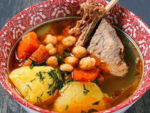
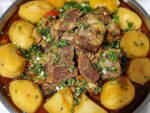

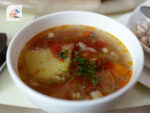
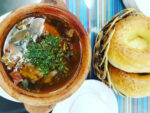
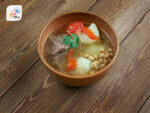


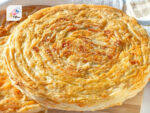
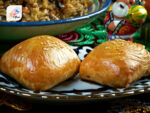
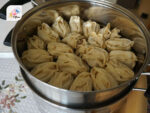

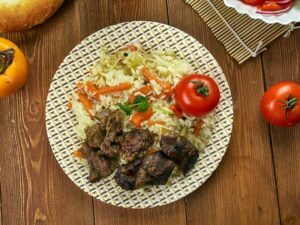
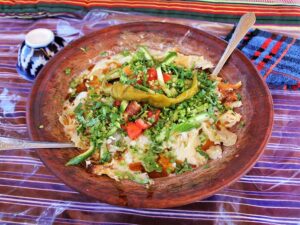
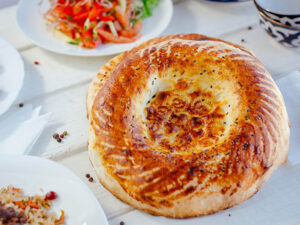
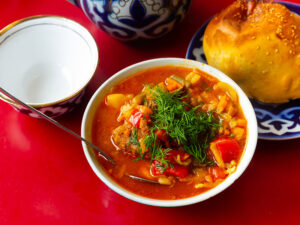
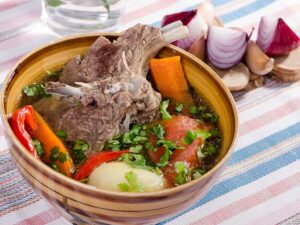
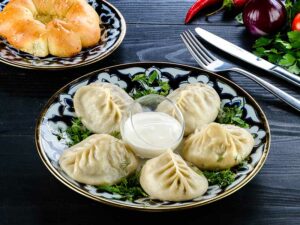
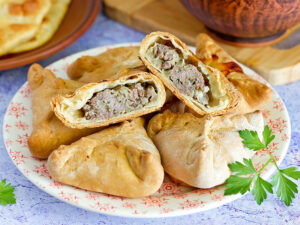
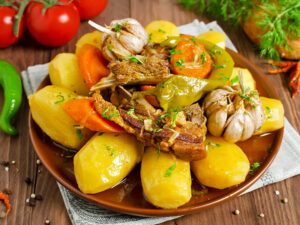
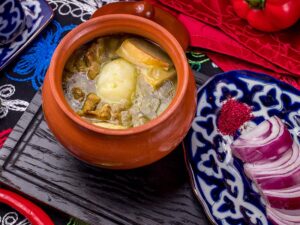

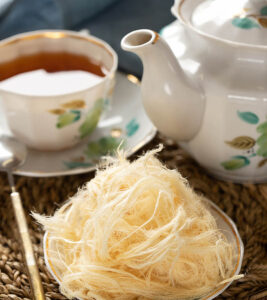
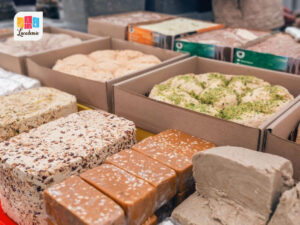
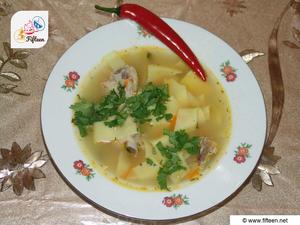
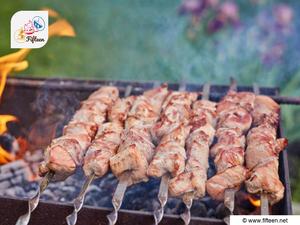
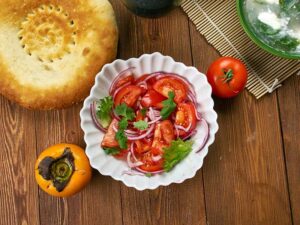

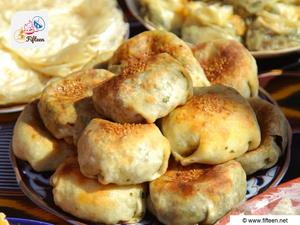
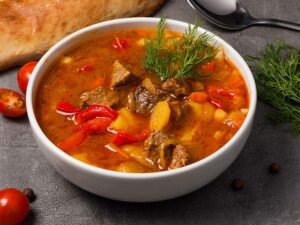
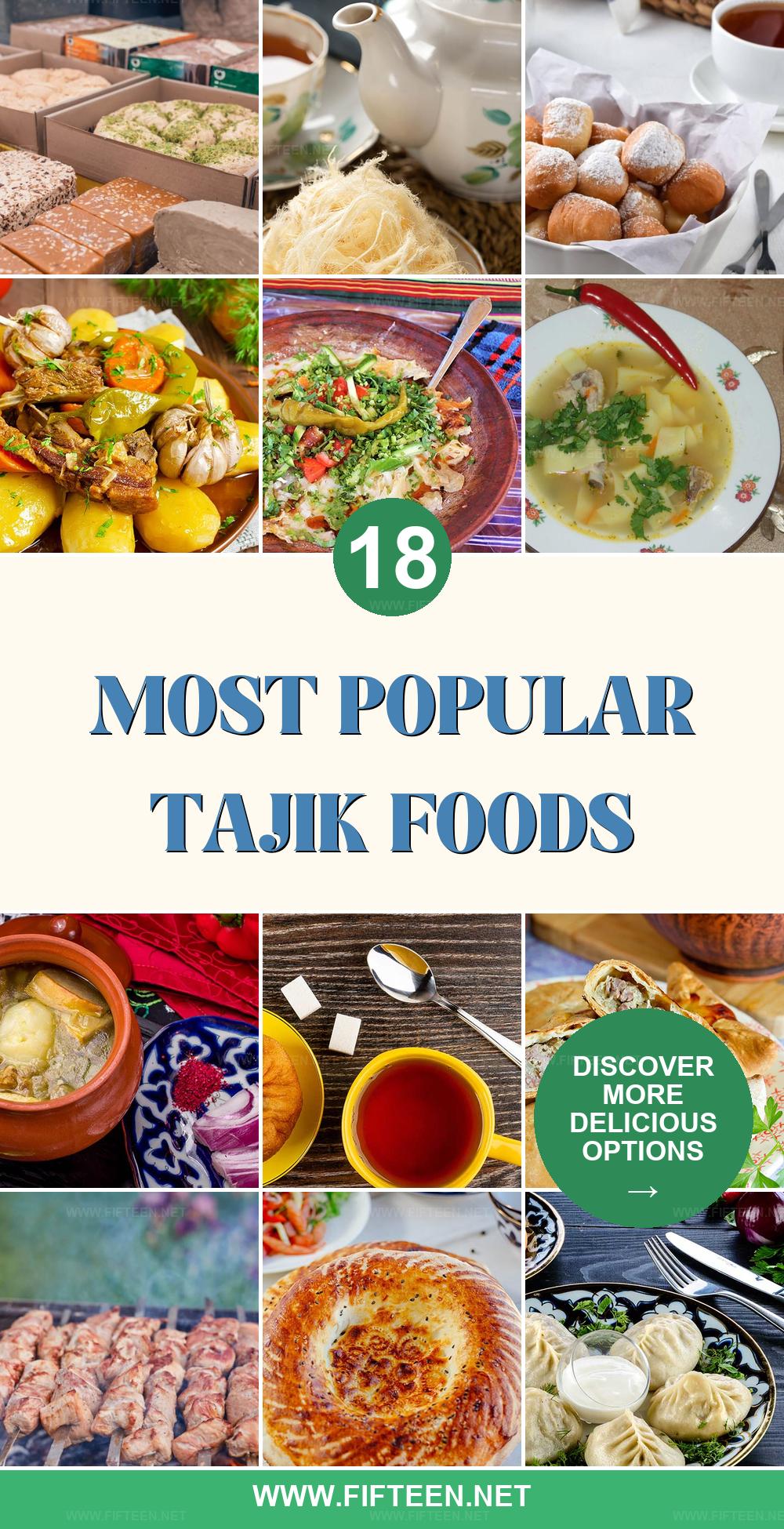
Jamie Scott
Editor in Chief, Senior Content Writer
Expertise
Home Cooking, Meal Planning, Recipe Development, Baking and Pastry, Food Editor, Cooking-video Maker, Western Food Evaluation Expert
Education
Le Cordon Bleu College of Culinary Arts
Local Community College, New York, NY
Jamie Scott is a skilled culinary expert and content creator specializing in Western cuisine. With over 15 years in the culinary field and formal training from Le Cordon Bleu, Paris, Jamie deeply understands how to blend nutrition with delicious flavors. His passion for cooking matches his commitment to making healthy eating accessible and enjoyable.
On Fifteen.net, Jamie brings a fresh perspective to classic dishes and beverages, offering readers insightful recipes, cooking tips, and a fresh view on meal planning that emphasizes taste, health, and simplicity.